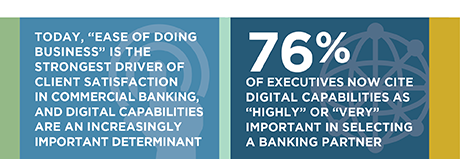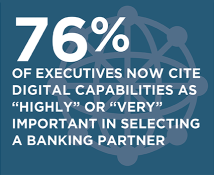
Digital banking capabilities are playing an ever larger role in companies’ relationships with their commercial banks and selection of new banking partners. Unfortunately, many providers’ digital platforms still fall short of continuously rising customer expectations, which are increasingly driven by executives’ consumerized experiences outside of banking. Regular, seamless transactions with entities like Amazon, Uber and even Starbucks are spilling over to treasurers’ expectations of their digital banking experiences.
Banks’ opportunities for improvement in digital banking technology have been catalyzed by sharply improving B2C capabilities and customer experiences. Owners and executives participating in Greenwich Associates research express frustration with time-consuming, manual and often redundant requirements that make doing business with banks more difficult when other industries are racing toward simplicity. These realities are now reflected in critical customer satisfaction metrics, which have taken a sharp downward turn after a decade of improvement.
The good news is that banks recognize these challenges and are stepping up investments accordingly. Leading banks have set ambitious development timelines and are investing millions of dollars to build out digital platforms they hope will address the “ease of doing business” issues and ultimately strengthen the customer relationship. The ensuing digital technology race will pose a significant challenge to smaller and regional banks, many of which will lack the scale and in-house expertise required to create, deploy and maintain differentiated digital platforms.
As customer demand for convenience continues to accelerate, commercial banks should consider these implications:
- Perceptions that banks are hard to do business with
- Softening customer satisfaction and eroding loyalty
- Vulnerability to non-traditional provider

